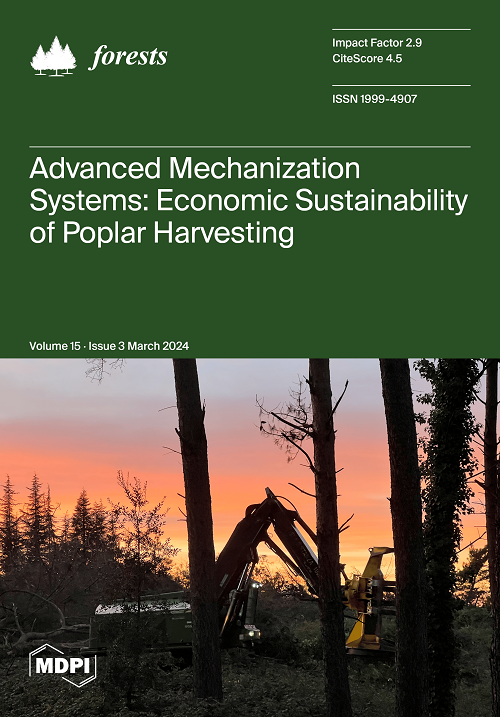西藏东南部的鹅掌楸变种的海拔依赖性天然更新
IF 2.5
2区 农林科学
Q1 FORESTRY
引用次数: 0
摘要
生物和非生物因素对西藏铁杉(Abies georgei var. smithii)自然再生的综合影响尚未得到深入了解。为了填补这一空白,我们的研究重点是西藏东南部色季拉山海拔从3730米到4330米梯度上的21个小区(每个小区20米×20米)中赤松幼苗、树苗和小树的再生密度。我们对描述林分结构和生态条件的 11 个变量进行了细致的测量。通过使用斯皮尔曼相关性分析、层次划分和多元线性回归进行分析,我们确定了促使赤松属植物成功再生的关键生态因素。我们的研究结果表明,在海拔 3930 米处,幼苗、树苗和小树的数量达到高峰。随着海拔从 3730 米上升到 4330 米,我们观察到树冠覆盖度(canopy)、母树密度(MotherT)、1000 颗种子重量(SeedW)、枯落物厚度(LitterT)、苔藓覆盖度(MossC)、苔藓厚度(MossT)、土壤湿度(SM)和土壤容重在最初增加后随之减少,而年平均气温和土壤冻土深度则持续下降。确定了以下对松柏自然再生的关键生态驱动因素:苔藓T对幼苗密度至关重要;冠层和苔藓C对树苗密度有影响;母亲T是影响小树密度的主要因素。这项研究表明,高密度的母树和厚而覆盖率高的苔藓层有利于西格拉山脉的赤松自然再生。了解其再生现状对于西藏赤松林的保护和管理策略至关重要。本文章由计算机程序翻译,如有差异,请以英文原文为准。
Elevation-Dependent Natural Regeneration of Abies georgei var. smithii Forest in Southeastern Tibet
The comprehensive impacts of biotic and abiotic factors on the natural regeneration of Abies georgei var. smithii (Abies) forests in Tibet are not thoroughly understood. To address this gap, our study focused on the regeneration densities of Abies seedlings, saplings, and small trees across 21 plots (each 20 m × 20 m) along an elevation gradient from 3730 m to 4330 m in the Sygera Mountains of Southeastern Tibet. We meticulously measured a suite of 11 variables that describe stand structures and ecological conditions. Through analyses using Spearman’s correlation analysis, hierarchical partitioning, and multiple linear regression, we identified key ecological drivers for successful Abies regeneration. Our results highlighted a peak in the abundance of seedlings, saplings, and small trees at an elevation of 3930 m. As the elevation rose from 3730 m to 4330 m, we observed an initial increase followed by a decrease in canopy cover (canopy), mother tree density (MotherT), 1000-seed weight (SeedW), litter thickness (LitterT), moss cover (MossC), moss thickness (MossT), soil moisture (SM), and soil bulk density, while mean annual temperature and soil depth to permafrost consistently decreased. The critical ecological drivers for Abies natural regeneration were identified as follows: MossT was pivotal for seedling density; canopy and MossC were influential for sapling density, and MotherT was the main factor affecting the density of small trees. This study suggests that a high density of mother trees and a thick and highly covered layer of moss are conducive to the natural regeneration of Abies in the Sygera Mountains. Understanding the current status of regeneration is vital for informing conservation and management strategies for Abies forests in Tibet.
求助全文
通过发布文献求助,成功后即可免费获取论文全文。
去求助
来源期刊

Forests
FORESTRY-
CiteScore
4.40
自引率
17.20%
发文量
1823
审稿时长
19.02 days
期刊介绍:
Forests (ISSN 1999-4907) is an international and cross-disciplinary scholarly journal of forestry and forest ecology. It publishes research papers, short communications and review papers. There is no restriction on the length of the papers. Our aim is to encourage scientists to publish their experimental and theoretical research in as much detail as possible. Full experimental and/or methodical details must be provided for research articles.
 求助内容:
求助内容: 应助结果提醒方式:
应助结果提醒方式:


